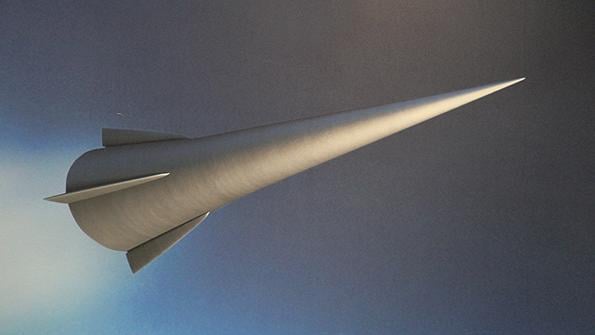
LRHW
A ground-launched hypersonic cruise missile could become part of the Pentagon’s portfolio of maneuvering weapons with speeds over Mach 5, Mark Lewis, the director of Defense Research and Engineering for Modernization, said on April 22.
The Pentagon has invested heavily in a plan to field the first U.S. Army battery in fiscal 2023 with the Long Range Hypersonic Weapon (LRHW), a rocket-boosted glider that is propelled to speeds of more than Mach 15 by a two-stage, 34.5-in.-dia. booster stack.
Separately, DARPA this year plans to demonstrate the Hypersonic Air-breathing Weapon Concept (HAWC), which are competing air-launched missiles designed by Lockheed Martin and Raytheon and powered by supersonic combustion ramjet (scramjet) engines.
Industry officials have previously suggested a role for a sea-launched version of HAWC, but Lewis said the Army may also need an air-breathing, scramjet-powered missile with hypersonic speed.
“Eventually you could see some ground-launched air-breathers as well,” Lewis said, speaking to reporters during a teleconference hosted by the Air Force Association’s Mitchell Institute.
Lewis, a member of the X-51 cruise missile demonstration a decade ago, favors taking a balanced approach to developing the hypersonic weapons portfolio. The rocket-boosted gliders, such as LRHW, fly faster and with higher trajectories than an air-breathing system, but are larger and require more advanced materials to survive in higher temperatures while re-entering the atmosphere. Scramjet-powered missiles are smaller and slower, but have other advantages, such as a nose configuration that makes it easier to integrate a terminal seeker.
“I don’t think we know what the perfect answer is yet for the ground-based systems or the sea-launched systems,” Lewis said. “But I would be surprised if—just as with the air-launched systems—the perfect answer isn’t, in fact, we need a combination of all of the above.”
So far, none of the services have a funded plan to add a scramjet-powered, hypersonic cruise missile to the portfolio. Gen. Timothy Ray, the head of Global Strike Command, said in early April that he was comfortable with the U.S. Air Force’s decision to move forward with the rocket-boosted Lockheed Martin AGM-183A Air-launched Rapid Response Weapon. Ray added that the Air Force will consider cruise missile options as they mature.
Meanwhile, Lewis’ team in the Office of the Secretary of Defense is developing an “acceleration plan” for the hypersonic weapons portfolio. A major theme of the plan is preparing the industrial base to produce hypersonic weapons at large-scale, but developing an operational scramjet-powered missile is also part of it, he said.
“A major part of that acceleration plan is a significant investment in our hypersonic air-breathing technology,” Lewis said.





